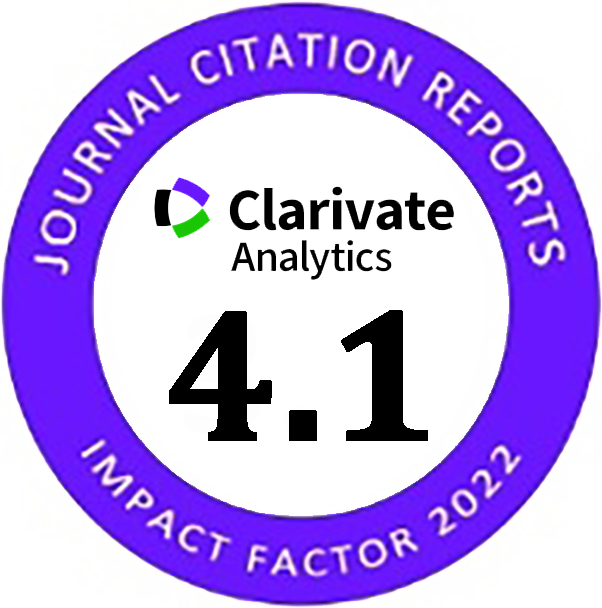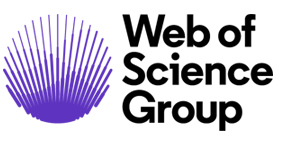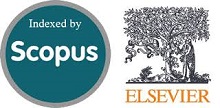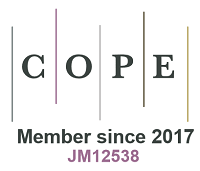Forecasting the Effects of Failure Criteria in Assessing Ship Structural Damage Modes
Abstract
Doi: 10.28991/CEJ-2022-08-10-03
Full Text: PDF
Keywords
References
United Nations Conference on trade and Development (UNCTAD). (2021). Review of Maritime Transport 2021. United Nations Publication, Geneva, Switzerland.
Allianz. (2021). Safety and shipping review 2021. Allianz Global Corporate & Specialty, Munich, Germany.
Ridwan, Putranto, T., Laksono, F. B., & Prabowo, A. R. (2020). Fracture and damage to the material accounting for transportation crash and accident. Procedia Structural Integrity, 27(2020), 38–45. doi:10.1016/j.prostr.2020.07.006.
Prabowo, A. R., Tuswan, T., Prabowoputra, D. M., & Ridwan, R. (2021). Deformation of designed steel plates: An optimization of the side hull structure using the finite element approach. Open Engineering, 11(1), 1034–1047. doi:10.1515/eng-2021-0104.
Fajri, A., Prabowo, A. R., & Muhayat, N. (2022). Assessment of ship structure under fatigue loading: FE benchmarking and extended performance analysis. Curved and Layered Structures, 9(1), 163–186. doi:10.1515/cls-2022-0014.
Prabowo, A. R., Tuswan, T., & Ridwan, R. (2021). Advanced development of sensors’ roles in maritime‐based industry and research: From field monitoring to high‐risk phenomenon measurement. Applied Sciences (Switzerland), 11(9), 3954. doi:10.3390/app11093954.
Ansori, D. T. A., Prabowo, A. R., Muttaqie, T., Muhayat, N., Laksono, F. B., Tjahjana, D. D. D. P., Prasetyo, A., & Kuswardi, Y. (2022). Investigation of Honeycomb Sandwich Panel Structure using Aluminum Alloy (AL6XN) Material under Blast Loading. Civil Engineering Journal (Iran), 8(5), 1046–1068. doi:10.28991/CEJ-2022-08-05-014.
Minorsly, V. U. (1959). An Analysis of ship Collisions with Reference to Protection of Nuclear Power Plants.pdf. Journal of Ship Research, 3(2), 1–4.
Lehmann, E., & Peschmann, J. (2002). Energy absorption by the steel structure of ships in the event of collisions. Marine Structures, 15(4–5), 429–441. doi:10.1016/S0951-8339(02)00011-4.
Scharrer, M., Zhang, L., & Egge, E.-D. (2002). Abschlußbericht zum Vorhaben MTK0614, Kollisionsberechnungen in schiffbaulichen Entwurfssystemen (Collision calculations in naval engineering design systems). Version 1/2002-11-22. Bericht Nr. ESS 202.183; Version 1/2002-11-22, Hamburg, Germany.
Törnqvist, R. (2003). Design of crashworthy ship structures. PhD Thesis, Department of Mechanical Engineering, Technical University of Denmark, Lyngby, Denmark.
Liu, B., Villavicencio, R., Zhang, S., & Guedes Soares, C. (2017). A simple criterion to evaluate the rupture of materials in ship collision simulations. Marine Structures, 54, 92–111. doi:10.1016/j.marstruc.2017.03.006.
Alwan, F. H. A., Prabowo, A. R., Muttaqie, T., Muhayat, N., Ridwan, R., & Laksono, F. B. (2022). Assessment of ballistic impact damage on aluminum and magnesium alloys against high velocity bullets by dynamic FE simulations. Journal of the Mechanical Behavior of Materials, 31(1), 595–616. doi:10.1515/jmbm-2022-0064.
Ehlers, S., Broekhuijsen, J., Alsos, H. S., Biehl, F., & Tabri, K. (2008). Simulating the collision response of ship side structures: A failure criteria benchmark study. International Shipbuilding Progress, 55(1–2), 127–144. doi:10.3233/ISP-2008-0042.
Alsos, H. S., Amdahl, J., & Hopperstad, O. S. (2009). On the resistance to penetration of stiffened plates, Part II: Numerical analysis. International Journal of Impact Engineering, 36(7), 875–887. doi:10.1016/j.ijimpeng.2008.11.004.
Marinatos, J. N., & Samuelides, M. S. (2015). Towards a unified methodology for the simulation of rupture in collision and grounding of ships. Marine Structures, 42, 1–32. doi:10.1016/j.marstruc.2015.02.006.
Abubakar, A., & Dow, R. S. (2013). Simulation of ship grounding damage using the finite element method. International Journal of Solids and Structures, 50(5), 623–636. doi:10.1016/j.ijsolstr.2012.10.016.
Storheim, M., Amdahl, J., & Martens, I. (2015). On the accuracy of fracture estimation in collision analysis of ship and offshore structures. Marine Structures, 44, 254–287. doi:10.1016/j.marstruc.2015.09.006.
Sèbe, M., Kontovas, C. A., & Pendleton, L. (2020). Reducing whale-ship collisions by better estimating damages to ships. Science of the Total Environment, 713, 136643. doi:10.1016/j.scitotenv.2020.136643.
Callister Jr, W. D. (2000). Materials Science and Engineering-An Introduction (5th Ed.). John Wiley & Sons, Hoboken, United States. doi:10.1108/acmm.2000.12847aae.001.
ANSYS. (2020). ANSYS LS-DYNA User’s Guide. ANSYS, Inc., Pennsylvania, United States.
Rice, J. R., & Tracey, D. M. (1969). On the ductile enlargement of voids in triaxial stress fields. Journal of the Mechanics and Physics of Solids, 17(3), 201–217. doi:10.1016/0022-5096(69)90033-7.
Cockcroft, M. G., & Latham, D. J. (1968). Ductility and the workability of metals. Journal of the Institute of Metals, 96(1), 33–39.
Cabezas, E. E., & Celentano, D. J. (2004). Experimental and numerical analysis of the tensile test using sheet specimens. Finite Elements in Analysis and Design, 40(5–6), 555–575. doi:10.1016/S0168-874X(03)00096-9.
Abdullah, K. A., Mohamed Ali, J. S., & Aminanda, Y. (2012). Experimental and numerical simulation of hollow structure under compression loading. Advanced Materials Research, 576, 651–654. doi:10.4028/www.scientific.net/AMR.576.651.
Ridwan, R., Nuriana, W., & Prabowo, A. R. (2022). Energy absorption behaviors of designed metallic square tubes under axial loading: Experiment-based benchmarking and finite element calculation. Journal of the Mechanical Behavior of Materials, 31(1), 443–461. doi:10.1515/jmbm-2022-0052.
Prabowo, A. R., Ridwan, R., & Muttaqie, T. (2022). On The Resistance to Buckling Loads of Idealized Hull Structures: FE Analysis on Designed-Stiffened Plates. Designs, 6(3), 46. doi:10.3390/designs6030046.
Widiyanto, I., Alwan, F. H. A., Mubarok, M. A. H., Prabowo, A. R., Laksono, F. B., Bahatmaka, A., Adiputra, R., & Smaradhana, D. F. (2021). Effect of geometrical variations on the structural performance of shipping container panels: A parametric study towards a new alternative design. Curved and Layered Structures, 8(1), 271–306. doi:10.1515/cls-2021-0024.
Dzulfiqar, M. F., Prabowo, A. R., Ridwan, R., & Nubli, H. (2021). Assessment on the designed structural frame of the automatic thickness checking machine - Numerical validation in FE method. Procedia Structural Integrity, 33(C), 59–66. doi:10.1016/j.prostr.2021.10.009.
Wu, H. C., Xu, Z., & Wang, P. T. (1997). Torsion test of aluminum in the large strain range. International Journal of Plasticity, 13(10), 873–892. doi:10.1016/S0749-6419(97)00064-8.
Rhême, M., Botsis, J., Cugnoni, J., & Navi, P. (2013). Influence of the moisture content on the fracture characteristics of welded wood joint. Part 2: Mode II fracture. Holzforschung, 67(7), 755–761. doi:10.1515/hf-2012-0145.
Salehghaffari, S., Tajdari, M., Panahi, M., & Mokhtarnezhad, F. (2010). Attempts to improve energy absorption characteristics of circular metal tubes subjected to axial loading. Thin-Walled Structures, 48(6), 379–390. doi:10.1016/j.tws.2010.01.012.
Lu, G., & Yu, T. (2003). Energy Absorption of Structures and Materials. Woodhead Publishing Limited, Cambridge, England. doi:10.1533/9781855738584.
DOI: 10.28991/CEJ-2022-08-10-03
Refbacks
- There are currently no refbacks.
Copyright (c) 2022 Aditya Rio Prabowo, R. Ridwan, T. Tuswan, Fitrian Imaduddin

This work is licensed under a Creative Commons Attribution 4.0 International License.







